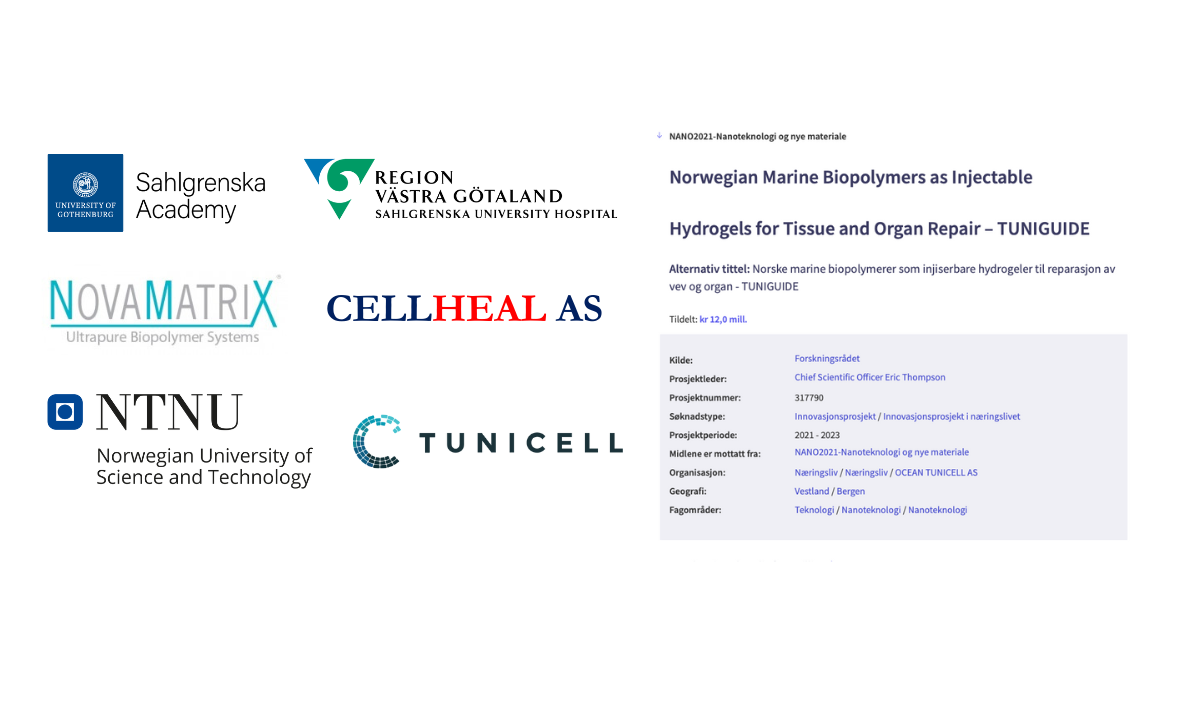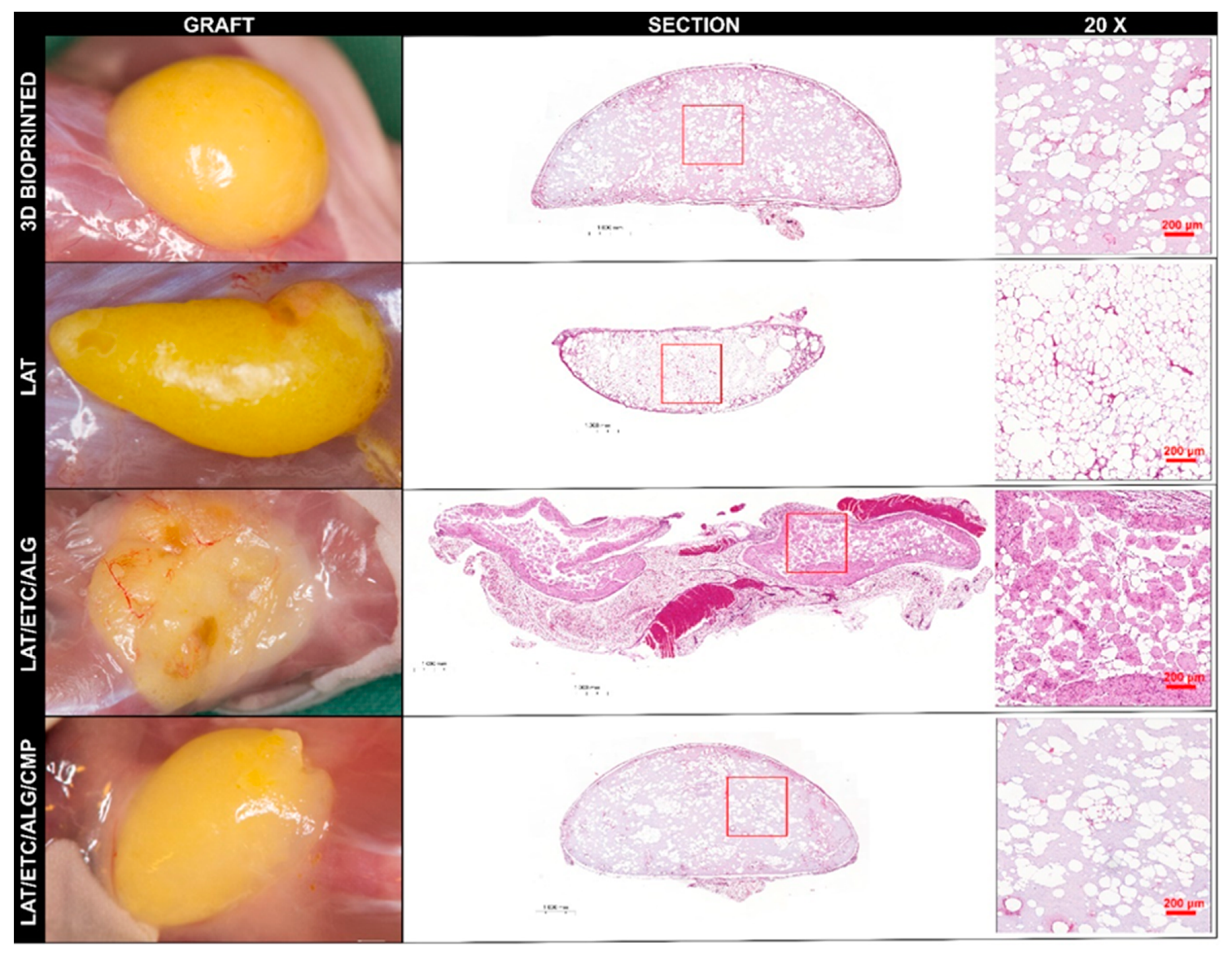Ocean TuniCell has been leading the TUNIGUIDE research project started in 2021, where the goal has been to develop an injectable hydrogel formulation for soft tissue repair. We have been collaborating with brilliant companies, researchers and clinicians during this project, such as CellHeal AS, NovaMatrix® (part of IFF N&H Norway AS), Norwegian University of Science and Technology (NTNU) and Sahlgrenska University Hospital.

In a recent publication from the TUNIGUIDE project, Kristin Oskarsdotter and colleagues developed a hydrogel consisting of TUNICELL and alginate that can be combined with lipoaspirate extracts from human adipose tissue. The aim was to create a stable hydrogel-fat graft in vivo, for repair and reconstruction of soft tissue defects.
The study included both in situ and ex situ crosslinking strategies for the hydrogel / lipoaspirate extract mixture and showed promise in developing an injectable fat-hydrogel formulation that crosslinks in situ. An injectable formulation could be very beneficial for applications in soft tissue reconstruction, using a minimally invasive procedure to reduce risk and discomfort to the patient, as well as cost benefits for healthcare systems.
Our CSO, manager of the TUNIGUIDE project, comments:

Fat grafting for soft tissue reconstruction in patients currently suffers from a major drawback of unpredictable results, largely due to partial or complete resorption of the graft occurring with high frequency. Combining autologous fat grafting with TUNICELL-based hydrogels in an, injectable, in situ crosslinking formulation, promotes stability of the fat-hydrogel grafts, resulting in proper shape and volume retention, characteristics that are a step forward towards more satisfactory patient outcomes.”
Oskarsdotter K, Nordgård CT, Apelgren P, Säljö K, Solbu AA, Eliasson E, Sämfors S, Sætrang HEM, Asdahl LC, Thompson EM, et al (2023) Injectable In Situ Crosslinking Hydrogel for Autologous Fat Grafting. Gels. 9(10):813. https://doi.org/10.3390/gels9100813


